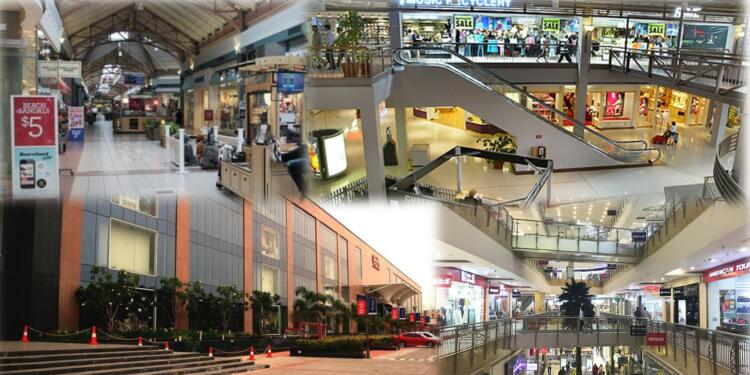Rajesh belongs to a lower middle class family and every month, he goes to the nearby mall to enjoy and relax with his wife and children. Obviously, shopping malls have been designed to provide all sorts of activities.
Be it shopping from the branded stores, games for children, or the food court filled with all sorts of cuisine be it Italian or South-Indian. The advent of shopping malls popularised the concept of ‘Walmartization of retail market’. However, the shopping mall culture is dying a slow death in India.
GIP Mall on sale
Once known as the biggest mall of India, Noida’s The Great India Place which was built in 2007, is now on sale. As per reports, the promoters of the Entertainment City Limited, who operated the GIP mall, are keen on selling it and the deal has been finalised at Rs2000 crore.
The entire developed area of 147 acres that is comprised of The Great India Place, Gardens Galleria Mall, Worlds of wonder, Amusement Park and Kidzania will be sold. The new buyer will be free to develop the vacant land that currently stands at 1.7 million sq. ft. This vacant space can be used to build commercial or residential buildings.
The GIP Mall is under debt of Rs 800 crores, and it has been speculated that the money would be used to settle the debt.
Also Read – How Ecommerce Companies like Amazon, Flipkart make you buy things they want you to buy?
DLF-The competitor of GIP was sold back in 2019
It was speculated the launch of DLF-Mall of India, would cut down the business and popularity of The Great India Place mall (GIP Mall). It did happen, major showrooms shifted to DLF mall that caused a huge blow to the GIP Mall. Later, in 2019, DLF transferred the shopping mall to its subsidiary firm for Rs 2,950 crore, as part of the effort to settle dues of its joint venture form with GIC. DLF has to pay Rs 8,700 crore to the DLF Cyber City Developers Ltd (DCCDL), which is a joint venture firm of DLF and Singapores’ sovereign wealth fund GIC. It wants to settle these dues by September this year, through transfer of rental assets and land parcels.
The rise of mall culture in India
The shopping mall culture marked its entry in India during the 1990s. The first mall of India was ‘Ansal Plaza’ that was opened on 1 November 1999. By the end of 2002, Delhi’s Ansal Plaza, Chennai’s Spencer Plaza, Mumbai’s Crossroads were the only three malls in India. The development of shopping malls enabled the coexistence of various locations for shopping, movies, and playing games. This is what captivated people and contributed to the development of culture. The mall culture slowed down in 2008 during recession and then bounced back. By 2011, every city had a mall and metro cities became the destination of the retail-real estate synergy.
The dilemma of E-commerce platforms
Then came up the e-commerce platform during 2014-15, and gave a tough competition to the malls. The trust factor increased and people started focusing on easy purchase rather than wandering through malls. People are now starting to find eCommerce platforms more convenient to perform their shopping activities and this is going to severely affect the retail sector. Moreover, the stores in malls have to pay huge rent and they fail to compete with the online platforms as far as discounts are concerned.
Also Read- The new e-commerce policy of India comes as a big boost for local products
In addition, retailers in malls take longer to refresh their inventory than goods available online. Mall stores refresh their collections once a month or once a season, whereas e-commerce websites update their catalogues every day, hour, and occasionally even minute.
Covid has hit the final blow
Attributing to the success of the e-commerce platform, the Covid pandemic kicked in. The pandemic forced the shutters down for months. During March 2019 to April 2020, the malls witnessed a loss of Rs 3000 crore and leaving more than 1 lakh people unemployed. The malls, in which large quantities of money were invested, gradually became a burden as their performance deteriorated from running to terrible. It was predicted that the majority of malls would close in the near future, and this has already occurred.
The number of dead malls, the mall with a higher vacancy rate and low consumer traffic level, is increasing day by day. The stores are not able to sustain the rent and costly maintenance due to low pedestrian traffic.
In addition, operating a mall is similar to managing an entire city, because each mall offers a unique experience to its guests. Massive parking lots, security infrastructure, guards, maintaining the inside temperature of malls, and the operation of electric equipment such as lifts and escalators are some of the features that demand a high maintenance cost, which raises the entire cost of operating these shopping malls.
The shopping mall culture is slowly fading. Until date, it was thought to be a feature of tiny cities due to limited footfall. The dead mall mentality has also infiltrated major cities such as Noida. Shopping malls can only exist on the basis of the recreational activities they provide.
Support TFI:
Support us to strengthen the ‘Right’ ideology of cultural nationalism by purchasing the best quality garments from TFI-STORE.COM.































